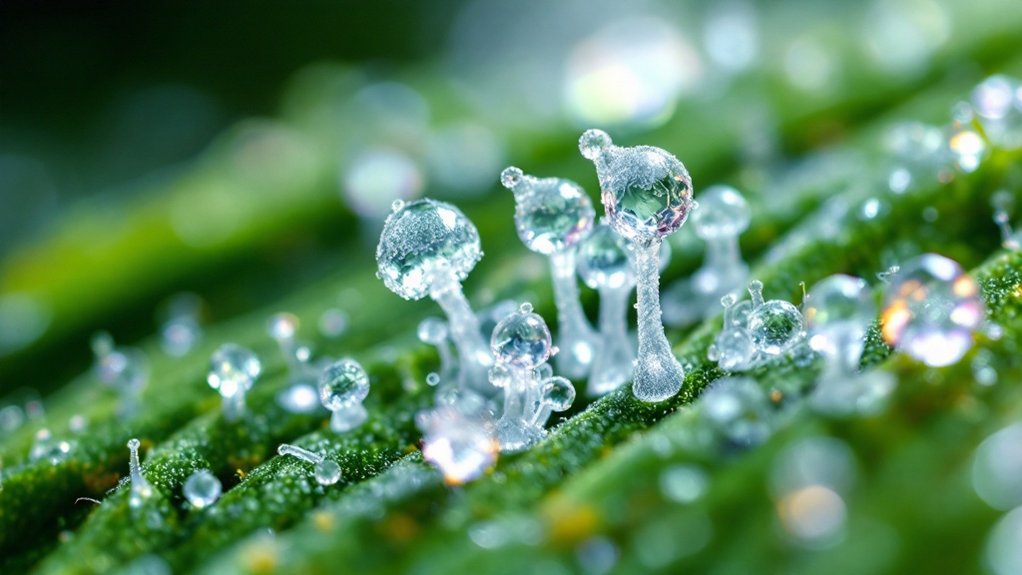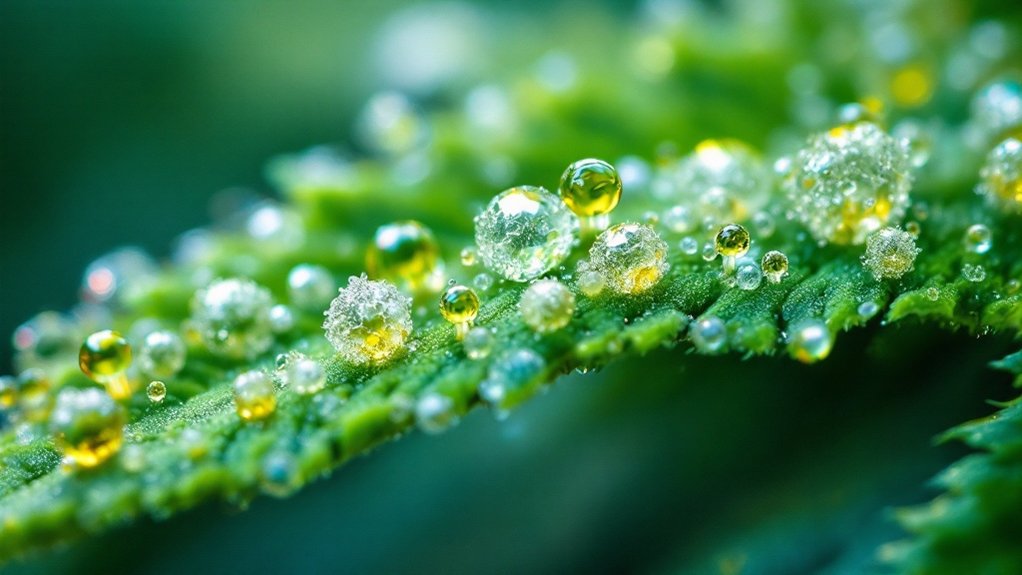Trichomes are microscopic hair-like structures found on plants and certain organisms, appearing as either glandular or non-glandular formations. These tiny appendages serve essential functions including defense against predators, environmental protection, moisture regulation, and production of valuable compounds like cannabinoids in cannabis. Their structures vary widely from unicellular to complex multicellular arrangements, with specializations that reflect evolutionary adaptations to specific ecological niches. The diverse morphology and biochemical capabilities of these minute structures reveal nature’s remarkable engineering at the microscopic level.

While often overlooked by the casual observer, trichomes represent one of the most fascinating microscopic structures in the plant kingdom. These fine outgrowths or appendages can be found on plants, algae, lichens, and certain protists, appearing as hairs, glandular hairs, scales, or papillae. The collective presence of trichomes on a surface is termed indumentum, and surfaces exhibiting these structures are described as pubescent. Throughout the natural world, trichomes vary markedly in both their structure and function, adapting to serve the specific needs of their host organisms.
Structurally, trichomes can be categorized into several distinct types based on their cellular composition and morphology. Unicellular trichomes consist of single cells, while multicellular forms comprise multiple cells arranged in various configurations. Glandular trichomes possess a stalk that terminates in a specialized glandular head responsible for secretion activities. In contrast, nonglandular trichomes lack these secretory capabilities and primarily serve as physical barriers. Cannabis plants showcase particularly specialized forms, including bulbous trichomes (small, spherical structures on young growth) and capitate trichomes, which come in both sessile (mushroom-like) and stalked varieties.
The intricate diversity of trichome structures reveals nature’s precision, from single-celled guardians to complex glandular architects of plant chemistry.
The functional aspects of trichomes demonstrate their evolutionary importance across plant species. They serve as essential defense mechanisms against herbivores and insects through physical deterrence or by producing sticky, irritating secretions. Environmental protection represents another key function, as trichomes shield plants from excessive UV radiation and help reduce water loss by moderating moisture evaporation from leaf surfaces. In some plants like C. salviifolius, non-glandular trichomes are specialized to synthesize and store polyphenolic compounds that contribute to the plant’s defense system.
In many species, these structures also serve as production sites for valuable secondary metabolites, including resins and essential oils. Species-specific adaptations highlight the diverse roles trichomes play across different organisms. In cannabis, capitate-stalked trichomes are responsible for producing and storing cannabinoids and terpenes, directly influencing the plant’s potency and aromatic profile. It’s important to note that products derived from these cannabis trichomes are strictly for adult use only and subject to age verification requirements.
Algal and cyanobacterial trichomes form interconnected networks that stabilize soil and prevent erosion. The industrial relevance of trichomes extends to agriculture, pharmaceuticals, and consumer products, where trichome-derived compounds are actively harvested, and plants are selectively bred for desirable trichome characteristics. Their economic significance continues to grow as researchers uncover additional applications for these remarkable microscopic structures in medicine, agriculture, and various commercial products.
Frequently Asked Questions
Can Trichomes Be Artificially Created or Manipulated?
Trichomes can indeed be artificially manipulated through multiple approaches.
Scientists employ genetic modification techniques targeting transcription factors like AtMybl2 and AaMYB1 to enhance trichome formation and density.
Artificial selection methods involve breeding plants with desirable trichome characteristics across generations.
Additionally, cell culture approaches allow researchers to grow trichomes independently from parent plants.
These technologies have commercial applications for increasing cannabinoid production and improving plant product quality through enhanced trichome development.
How Do Environmental Factors Affect Trichome Development?
Environmental factors greatly influence trichome development in plants. Stressors like wounding, frost conditions, and heavy metal exposure can increase trichome density as part of defense responses.
Light intensity directly affects both trichome morphology and density.
Climate adaptations show negative correlations between trichome density and precipitation, helping plants conserve water in dry environments.
Hormonal regulation through gibberellic acid, jasmonic acid, and cytokinin coordinates with genetic factors to fine-tune trichome production based on prevailing environmental conditions.
Do All Cannabis Strains Produce the Same Trichomes?
While all cannabis strains produce the three main types of trichomes—bulbous, capitate-sessile, and capitate-stalked—their distribution, density, and characteristics vary markedly between strains.
Genetic factors determine both trichome quantity and the specific cannabinoid and terpene profiles contained within them.
Some strains naturally develop more capitate-stalked trichomes, which contain higher concentrations of cannabinoids and contribute to greater potency.
These genetic variations result in distinct trichome patterns across different cannabis varieties.
Can Damaged Trichomes Regenerate?
Damaged trichomes cannot regenerate once broken or removed from the cannabis plant.
These resinous structures develop during specific growth phases and lack repair mechanisms to restore their original form after damage occurs.
Physical handling, harvesting, and processing inevitably cause some trichome loss, which is permanent.
While plants actively growing may produce new trichomes in response to environmental stressors, existing damaged trichomes themselves cannot heal or regenerate their complex glandular structures that contain cannabinoids and terpenes.
What’s the Relationship Between Trichomes and Plant Diseases?
Trichomes exhibit a complex relationship with plant diseases. They primarily serve as protective barriers, physically deterring pathogens and secreting defensive chemicals that reduce infection rates.
Plants can increase trichome density up to 500% following herbivore attacks, enhancing their defense systems.
Paradoxically, trichomes can also facilitate disease transmission, as some fungi and bacteria utilize them as colonization structures or entry pathways.
This dual role varies considerably between plant species and environmental conditions, creating a nuanced defensive mechanism that responds dynamically to stress.









